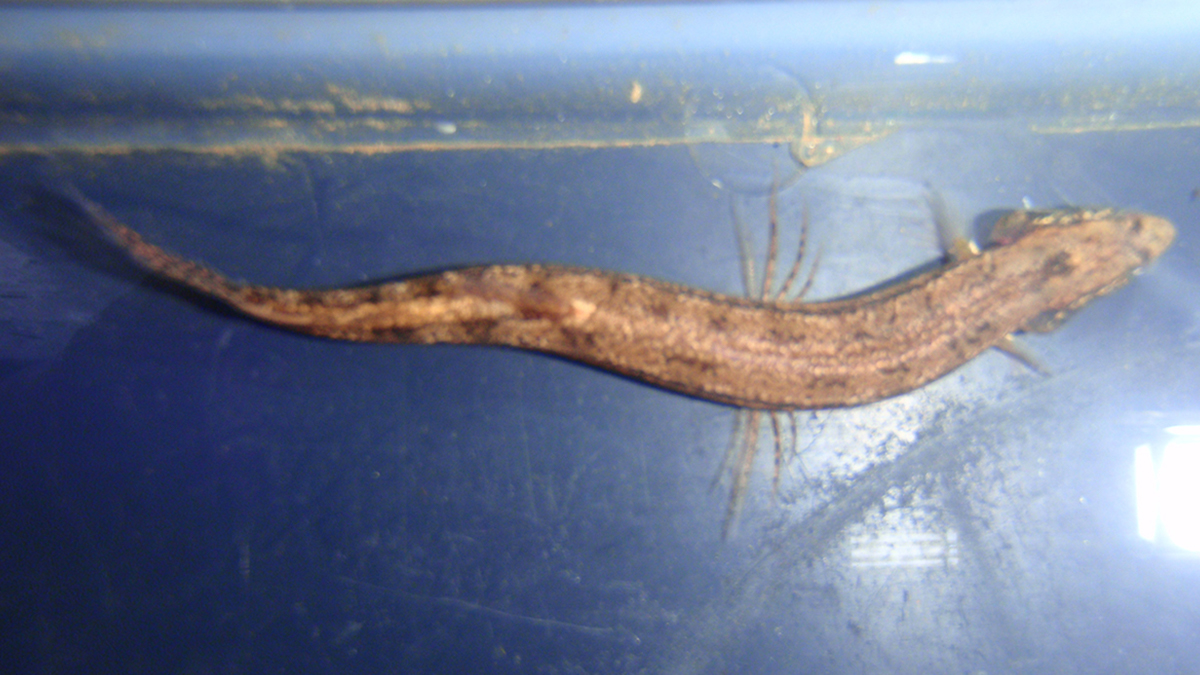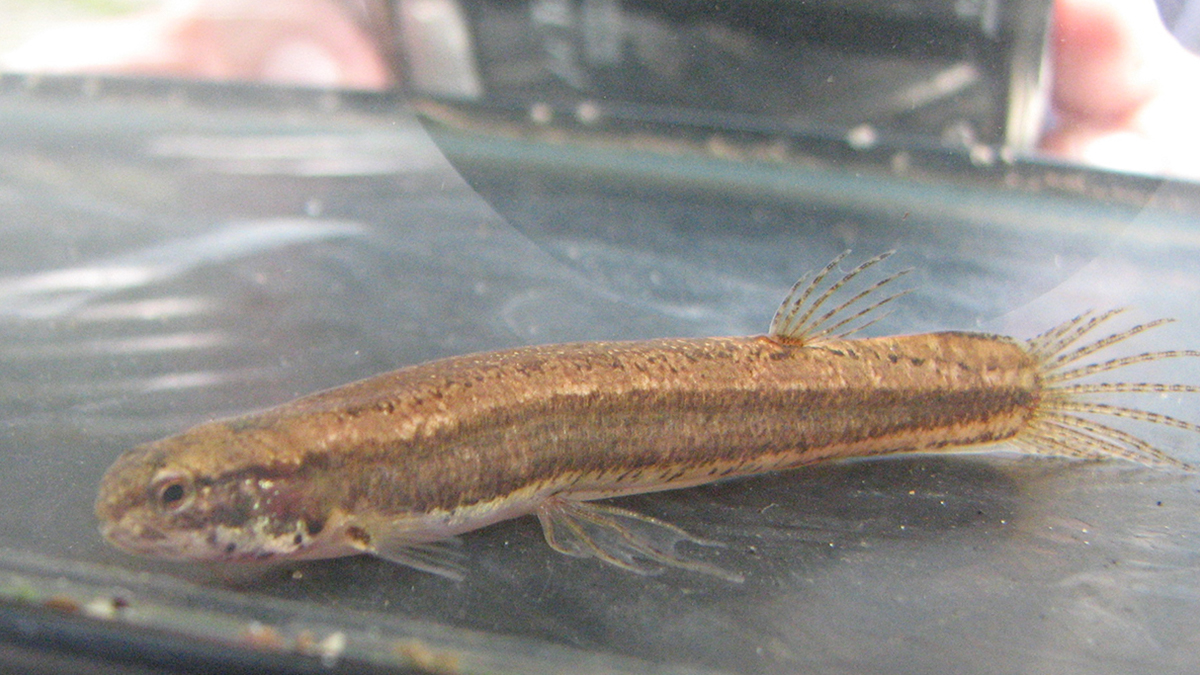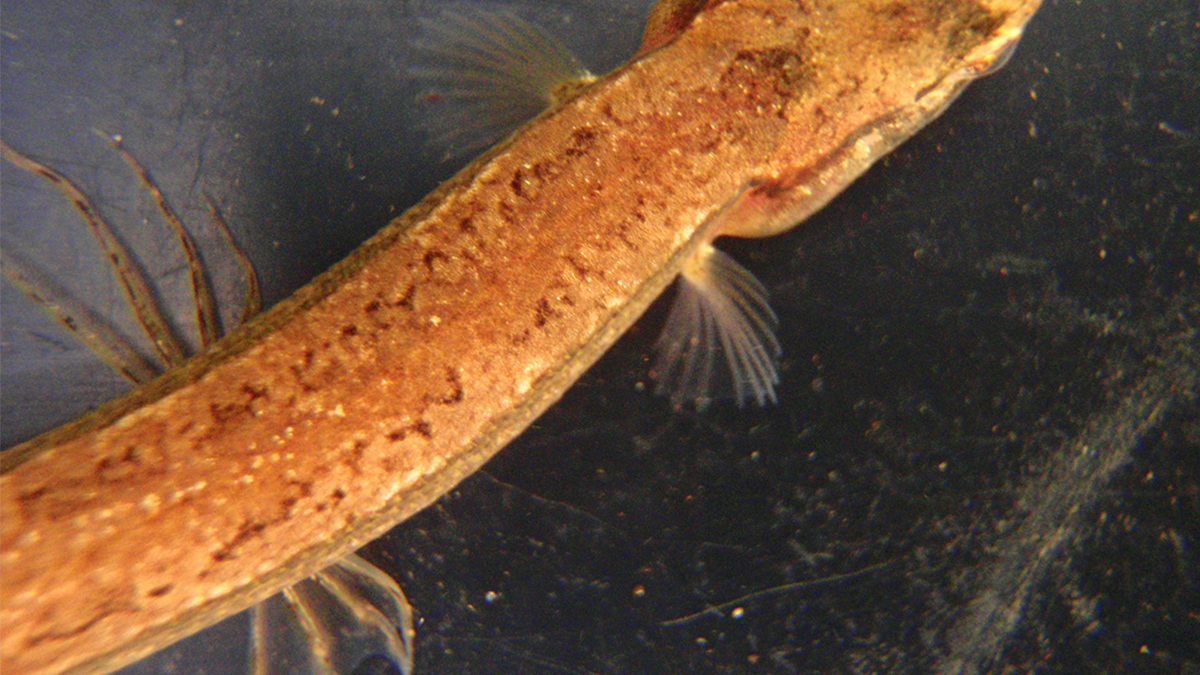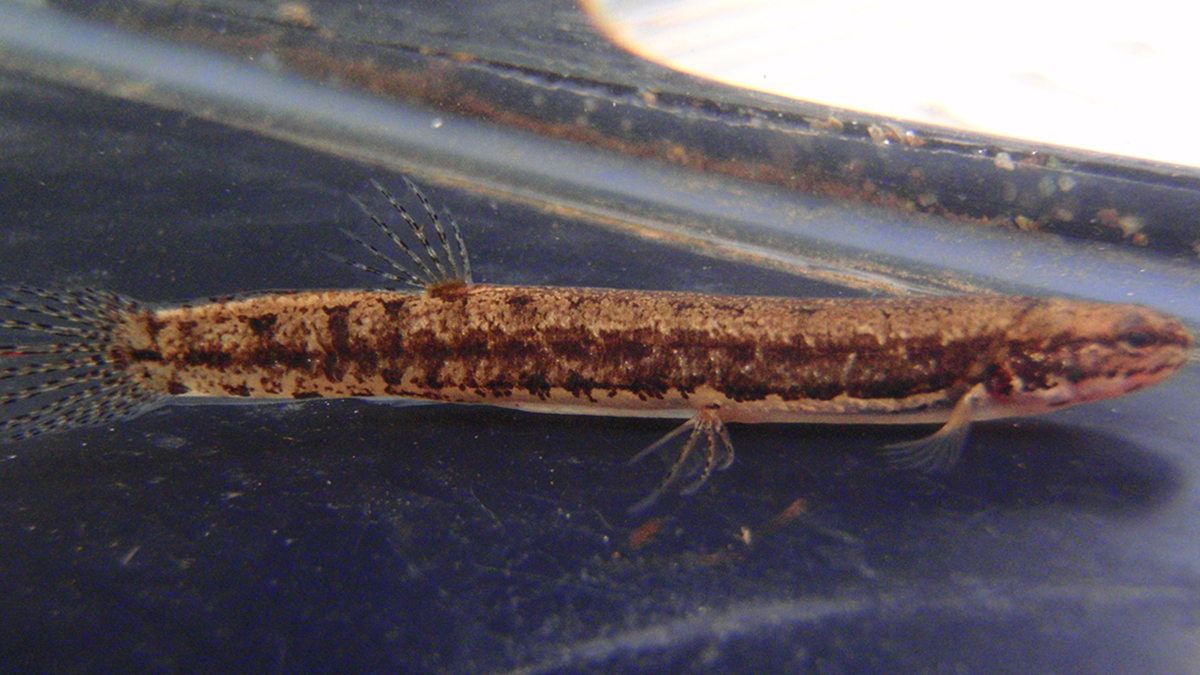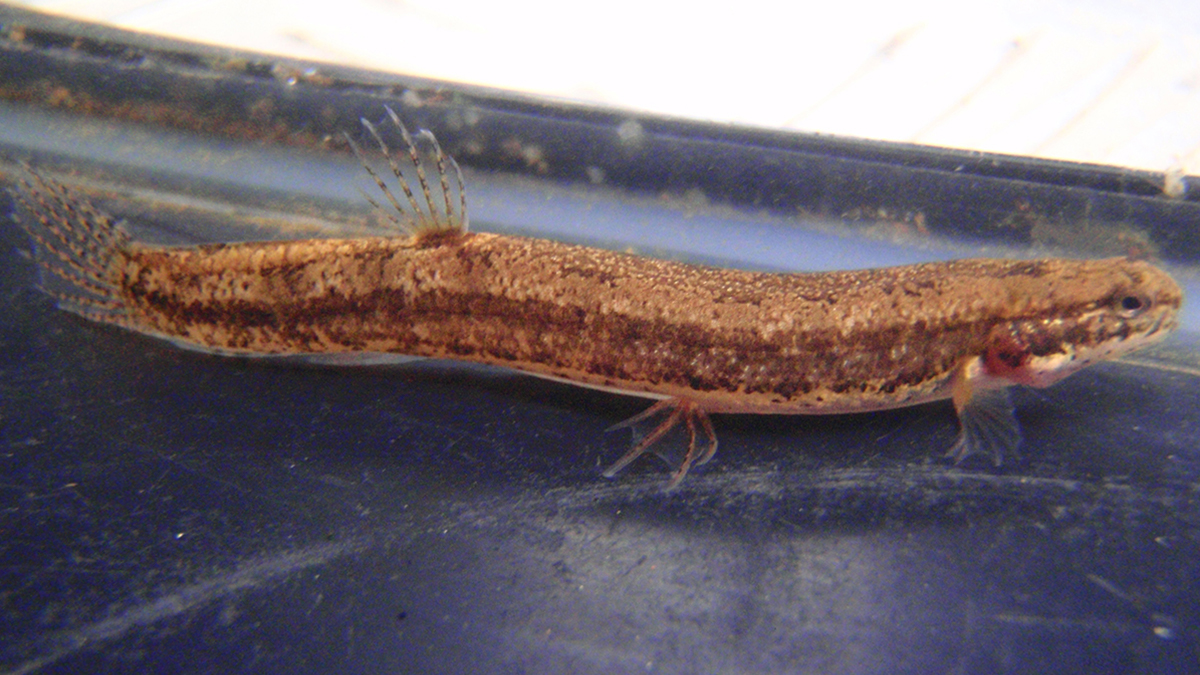Salamanderfish - Lepidogalaxias salamandroides
This page was created in partnership with the Freshwater Fish Group and Fish Health Unit at Murdoch University
Identification
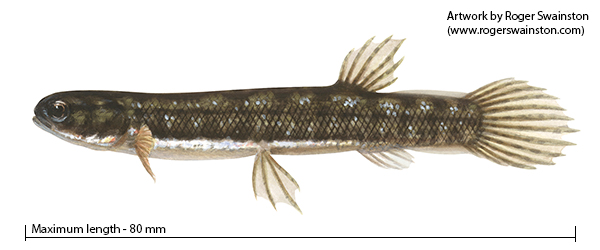
A slender, cylindrical-bodied fish, which spends most of its time on the substrate - appearing to 'stand' on its pelvic and pectoral fins.
It has a greenish to greyish to light-brown body, usually with dark patches along the sides and back, and flecked with silver markings. The belly is silver to pinkish (see Gallery)
Males can be identified as having a larger anal fin sheathed with scales. Males (up to 50 mm) are typically smaller than females (up to 80 mm).
It is a unique species that possesses many characteristics not found in other fishes, including the ability to bend its neck to the sides at right-angels, compensating for eyes that aren't able to move independently.
It can be distinguished from the galaxids by the presence of scales.
Distribution
Common within its restricted range in near-coastal wetlands between Augusta and Albany, although the species has undergone a severe reduction in the extent of occurrence (EOO) and area of occupancy (AOO) in the last two decades which has coincided with an extensive period of severe drying of the region.
It can occur in flowing streams within this range, however only generally in low abundance.
Habitat
Primarily found in highly acidic, shallow, temporary (dry out in summer) pools and swamps in coastal heathland.
Biology
Fish survive drying through summer months by burrowing into the substrate where they aestivate (a state of dormancy similar to hibernation, characterized by inactivity and a lowered metabolic rate). They will remain in the damp sandy soils until rains re-submerge the habitat the following year.
Most fish reach sexual maturity in the second year of life, although around 25% mature at the end of their first year. Breeding takes place from May to August. Life span is 3-5 years.
Diet consists mainly of microcrustaceans and insect larvae.
Conservation status
Threatened species: Listed as endangered under the Biodiversity Conservation Act 2016 (state, Western Australia) and the ICUN Redlist of Threatened Species 2019 (International).
Under the BC Act, Threatened species are listed in the category of critically endangered, endangered or vulnerable. Endangered species are considered to be “facing a very high risk of extinction in the wild in the near future, as determined in accordance with criteria set out in the ministerial guidelines”.
Further information
Contact the department’s River Science team, or the Murdoch Freshwater Fish Group via email: fish@murdoch.edu.au, or go to their website: www.freshwaterfishgroup.com


